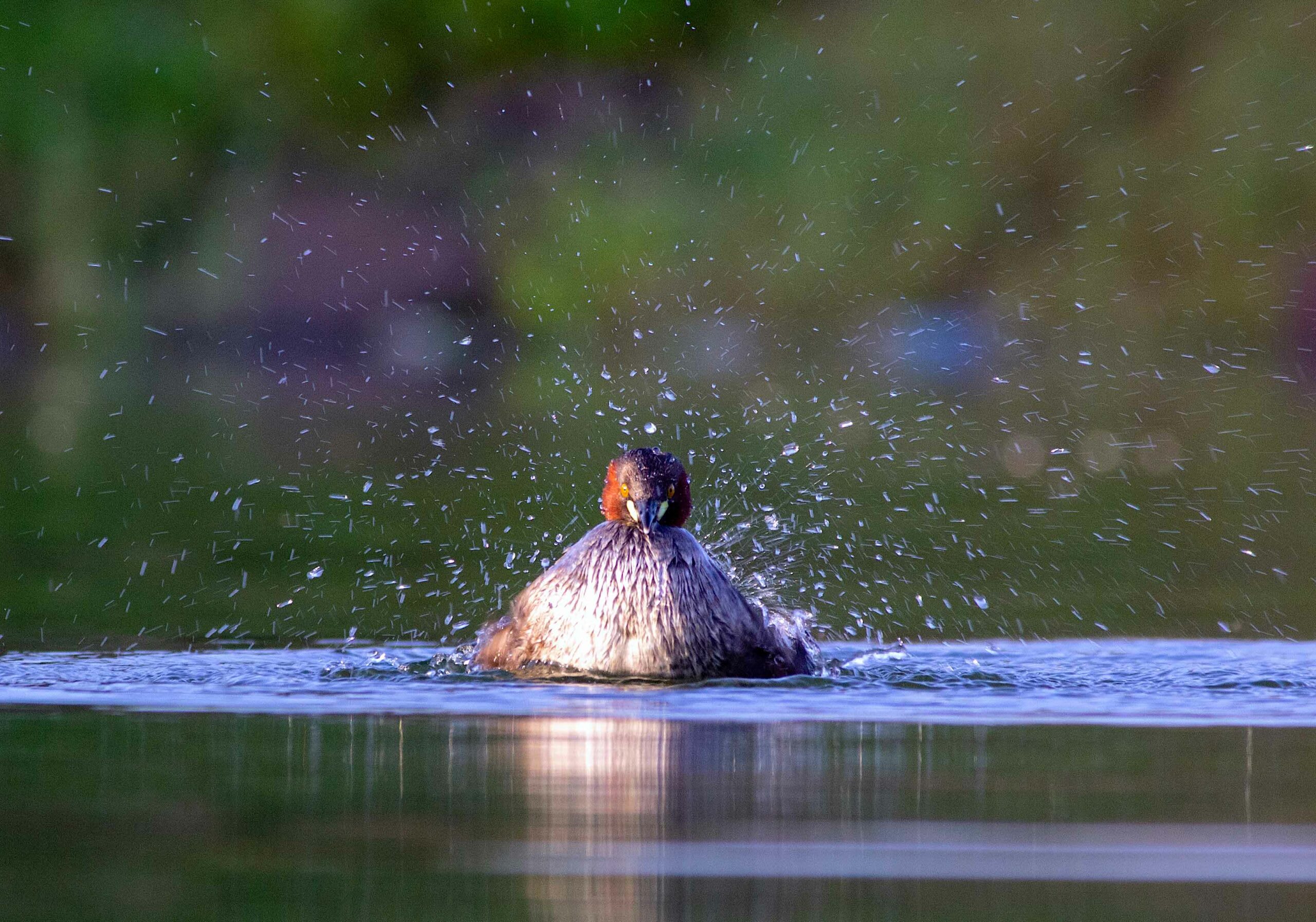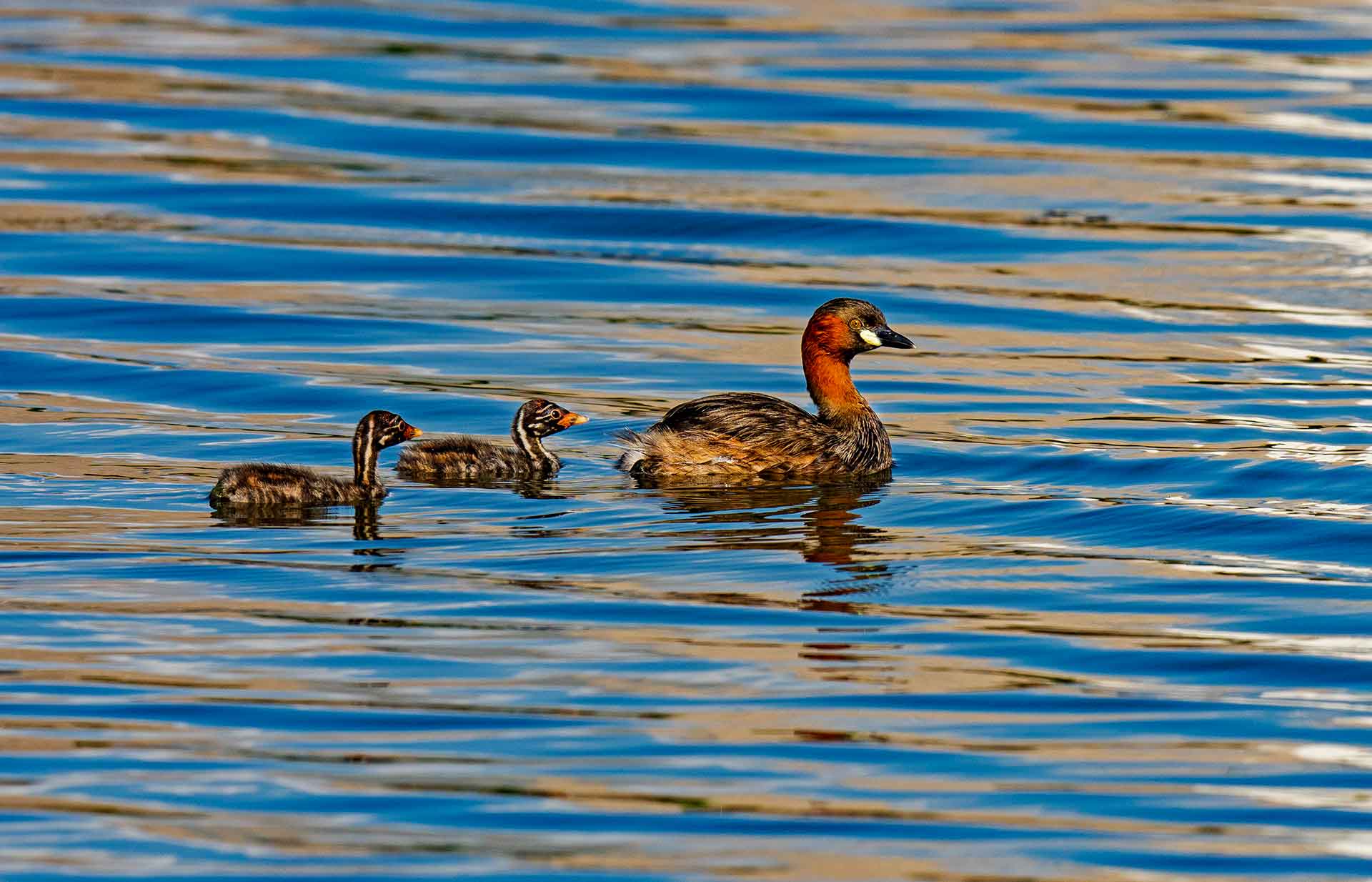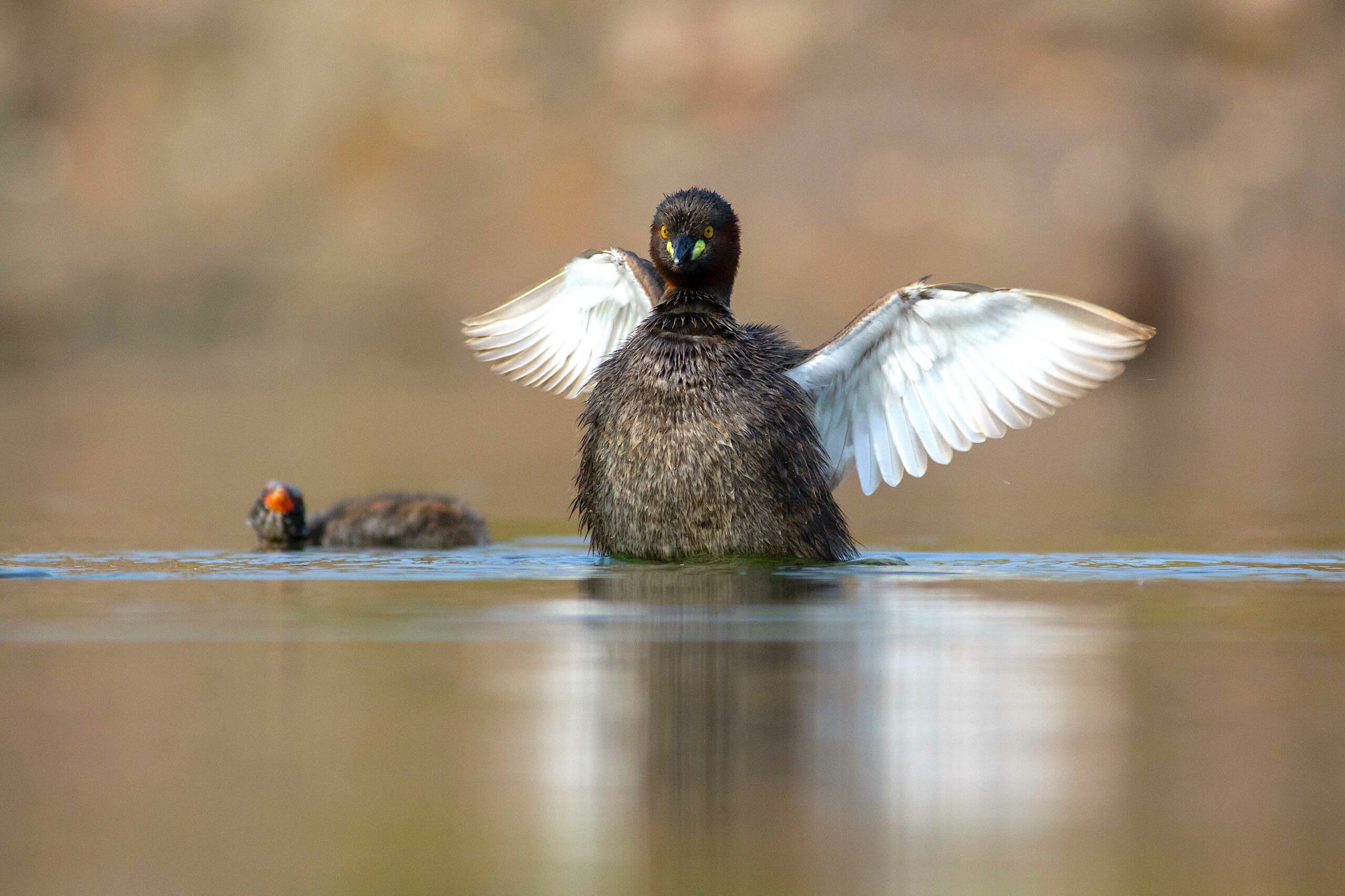Almost any wetland area in India is likely to have little grebes (Tachybaptus ruficollis) — small, chubby waterbirds with a blunt rear end. Because they are among the most common waterbirds, they are not paid much attention. Little grebes are usually dark brown with a reddish-brown throat and lighter coloured face. Their flanks are paler than their bodies, and their feathers are waterproof. They have a tough-looking wedge-shaped bill with a distinctive yellow patch at the base. Their eyes are beady yellow with a tiny black pupil.
“Among the 4-5 species of grebes present in India, little grebe is the smallest”, says ornithologist and former director of the Bombay Natural History Society, Dr Asad Rahmani. Fully grown adults are about 20-25 cm long and have a lifespan of 10-15 years. They are also lightweight and weigh less than 200 gm.
Little grebes are also called dabchicks. They are ancient birds most comfortable in the water, close to ducks and loons, and frequently confused with ducks. They have a peculiar biological structure, with legs quite far behind on the body, an aspect that is not visible when they are on the water. On rare occasions when they are found on the ground, their gait is described as a funny penguin-like waddle. In the water, the legs with lobed toes (unlike the webbed feet of ducks) act as strong propellers and help the birds dive and swim.
Little grebes are skittish and tend to dive underwater at the merest sign of danger, especially if it’s a raptor from above. They are very fast, which probably explains why their scientific name Tachybaptus ruficollis is derived from the Greek “takhos” (fast) and “bapto” (sink); “ruficollis” is drawn from the Latin words “rufus” (reddish) and “collus” (neck).
Little grebes can remain submerged for up to 30 seconds when threatened, but dives usually last about 15 seconds. While it is normal to find several individuals in a wetland, they seem to gather only as a congregation but don’t live as a cooperative flock doing things together. They produce a variety of rhythmic sounds, which are described variously as cooing, clucking, cackling, chattering, bleating, and even whinnying.

Little grebes are found throughout the subcontinent, except in the high Himalayas, even thriving in remote, harsh conditions at reservoirs and village tanks in Rajasthan.
Photo: Neel Sureja
Cover Photo: Neel Sureja
Little grebes are most likely to be found in ponds, freshwater lakes, reservoirs, rice fields, swamps, pools created by slow-moving rivers and other waterbodies. But since they are quite small, they can live in small wetlands as little as a few acres, says Dr Rahmani. He explains that they prefer shallow wetlands less than two metres deep and man-made reservoirs with water year-round and lots of little fish. Sometimes they are found in pools created by slow-moving rivers (almost never in fast-flowing ones) and in mangroves and brackish water (but not the sea). They migrate to larger wetlands if smaller ones dry up.
Photos: Neel Sureja

The diet of little grebes is largely aquatic. They dive to catch fish and other aquatic insects and creatures such as shrimp, crabs, crayfish, and molluscs. Though they are also known to eat certain nutritious roots and plant material growing in water, their mainstay is aquatic animal matter.
Photo: Dhritiman Mukherjee
The breeding season for little grebes varies with geography. In North India, it is just after the monsoons when fish stocks are abundant. In South and Central India, it is in the summer. The feathers on the bird’s face and throat become rich and shiny during the breeding season. Females lay 2-3 eggs once a year, but if the eggs are destroyed or the nest floats away due to flooding or other causes, she re-lays them.
Photos: Neel Sureja (left), Dhritiman Mukherjee (right)
Little grebes are monogamous. They display interesting courtship behaviour. A male will flap its wings and tap the water’s surface to catch the female’s attention. It’s almost like a dance combined with walking on the water’s surface and flying. This is repeated a few times. Sometimes 2-3 males pursue a single female who flies away and hides. Once they mate, the pair builds a nest, incubates eggs, looks after the nest and feeds the hatchlings together. The female lays eggs in a nest, which literally floats on the waterbody. Since the nest material gets soggy, the birds keep adding to it. Since the eggs are white and easily visible to predators, the parents cover them with vegetation, especially when leaving them unattended in the nest.
Photos: Dhritiman Mukherjee

The incubation period for the eggs is around 20-22 days, and all the eggs hatch almost simultaneously. The parents take turns feeding the newborns. The chicks are first fed soft feathers, which act as stomach lining and protect it from damage caused by fish bones. Little grebes are precocial birds, i.e. the chicks are born quite mature, and are capable of leaving the nest once they are dry, about 24 hours after they hatch, though parents continue to take care of them.
Photos: Dhritiman Mukherjee
The chicks, sometimes called grebettes, are covered in dull-coloured fluffy down and have distinct stripes on their heads and necks, which disappear as they grow older. Sometimes, the parents carry young chicks on their backs. Young ones are known to attain reproductive maturity in about a year.
Photo: Neel Sureja (left), Dhritiman Mukherjee (right)

Little grebes have many predators, such as raptors, snakes, and even crows that snatch away chicks. In many areas, introduced species like catfish are threats to little grebes, as they can catch the birds from below. Currently, the population of little grebes is not under threat, but there are worrying signs. Destruction of wetland habitats through widespread construction, pollution, and deforestation leading to climate change are all factors that are likely to affect the little grebe population. Another major threat is overfishing in large wetlands, which leaves hardly anything for the birds to subsist on. There is also the threat of little grebes getting caught in fishing nets and dying. Invasive species such as water hyacinth (jalkumbhi) is also a huge problem as it overtakes wetland areas, leaving very little clear water for this bird.
Photo: Neel Sureja
